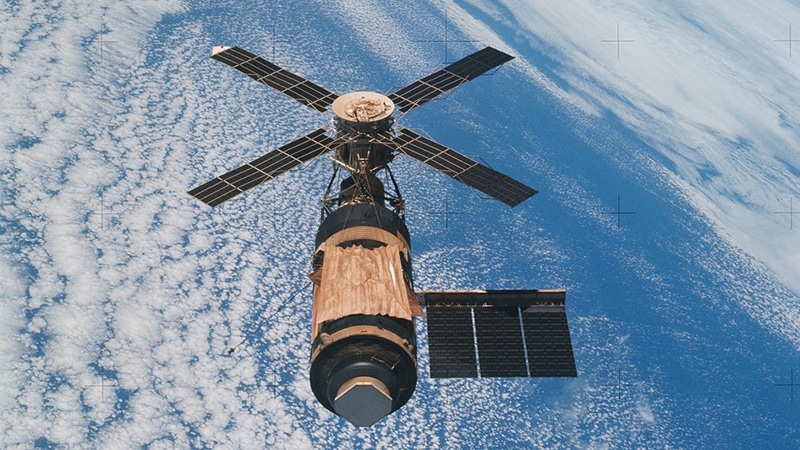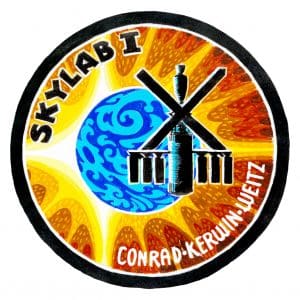This year, the Marshall Space Flight Center (MSFC) is celebrating 50 years since the launch of Skylab and MSFC’s leadership role in supporting the development and sustainment of America’s space stations.
On May 14, 1973, the U.S. launched our first space station, Skylab, into orbit, using the third stage of a Saturn IVB rocket that was converted into an orbiting laboratory and habitation module. MSFC Director, Dr. Wernher von Braun, first put pen to paper to draft a model of this plan in 1964.
Skylab was occupied by three crews for successive missions of 28, 56 and 84 days, testing the human body’s ability to adapt to long term space habitation and conducting space science experiments. The Skylab 3 mission (the second crewed mission) launched on July 28 and included longtime Huntsville resident, Owen Garriott.
Original plans for Skylab called for the station to remain in space after the final mission, for up to 10 years, possibly to be visited by the Shuttle fleet. But unexpectedly high solar activity foiled the plan, and on July 11, 1979, the station deorbited.
Following Skylab, the U.S. flew the Spacelab research module on 22 Space Shuttle missions, from 1986 – 1999. This lab provided limited duration space science experiment opportunities before another, long-term facility could be built and launched.
The first modules of the International Space Station (ISS) currently orbiting the earth, once every 90 seconds, launched in 1998. All U.S. components of the ISS were fabricated at MSFC as were the critical life support systems that provide oxygen and recycled water to the crew.
NASA is planning to deorbit the ISS in 2030 and hopes to utilize commercial space stations to continue its work in Low Earth Orbit (LEO). Many companies are leveraging MSFC expertise in life support system development and structural component testing, as NASA shifts to commercial space stations.
By Mike Ward
Senior VP, Government & Public Affairs
Huntsville/Madison County Chamber
[email protected]




